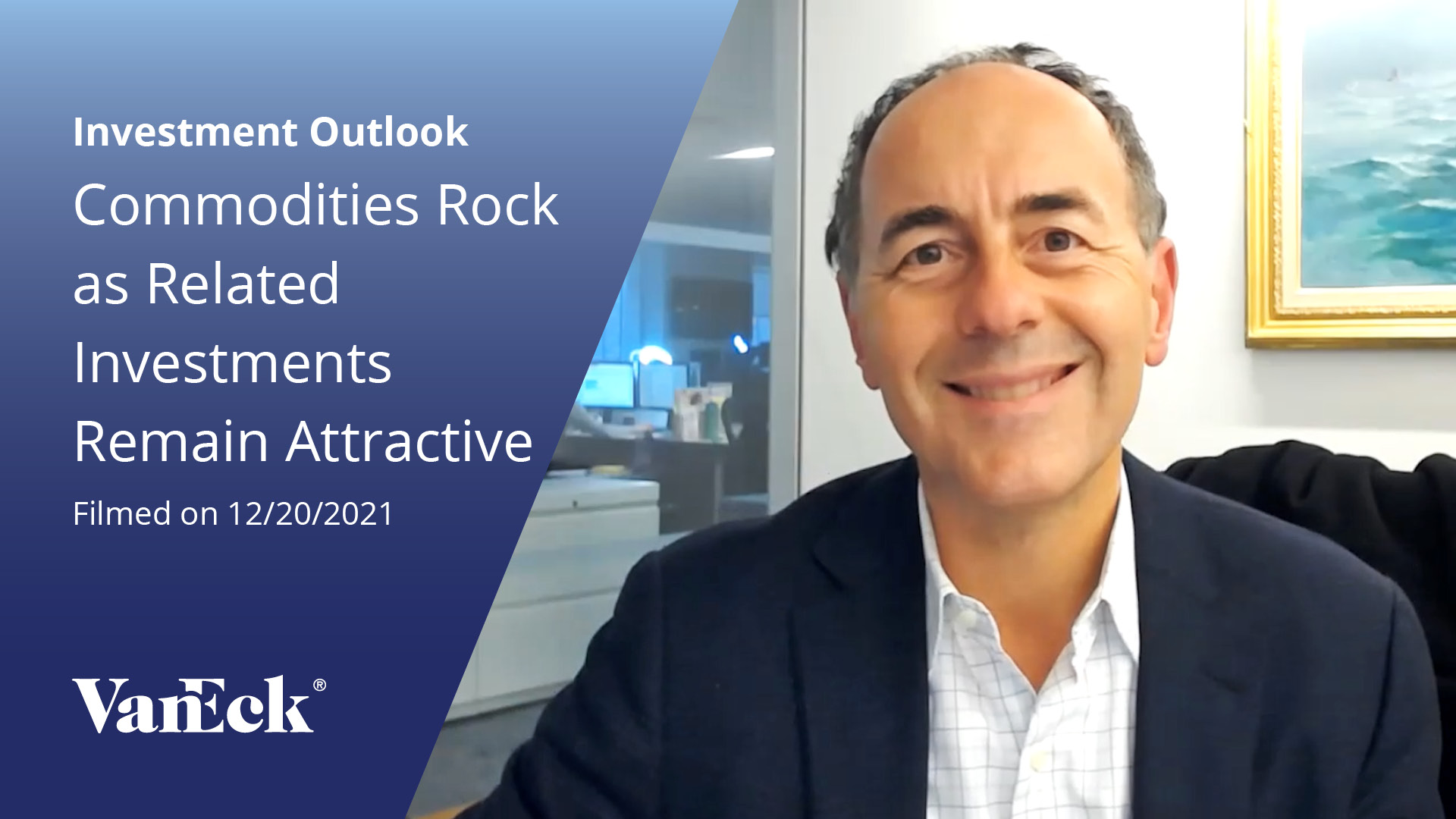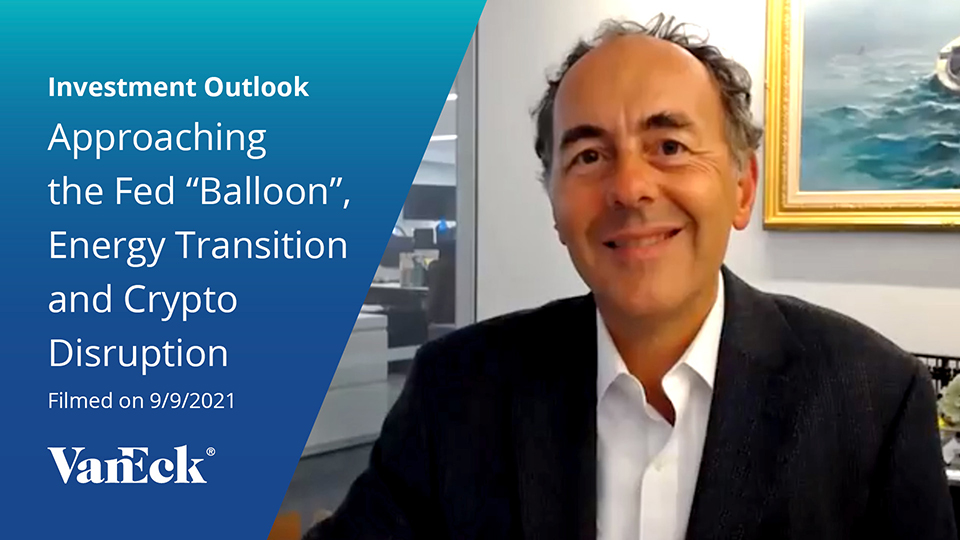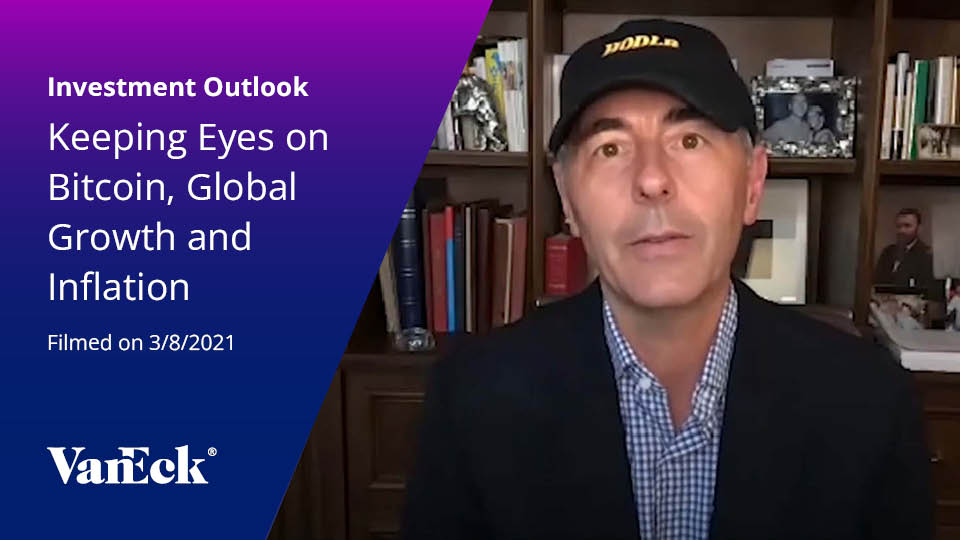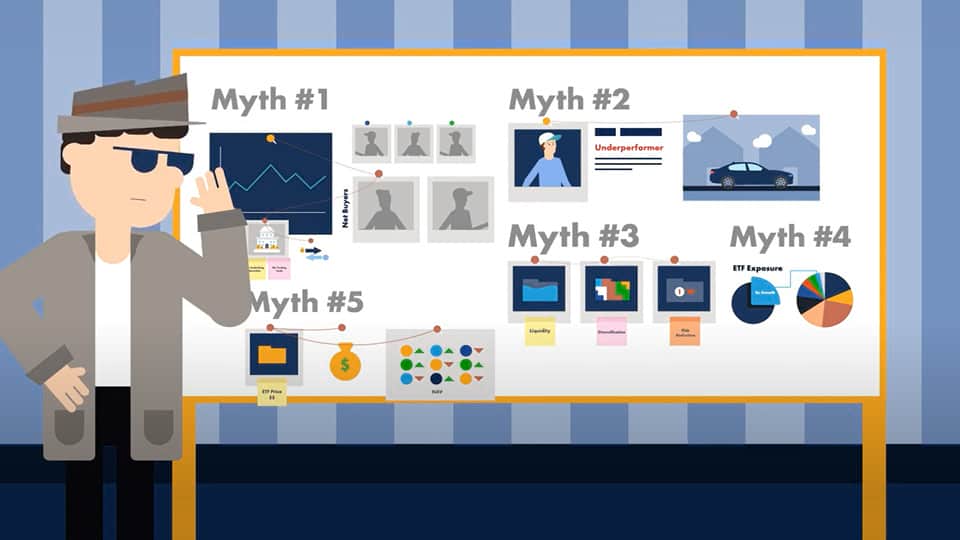PB Fintech’s CEO on India’s Growing Tech Landscape
18 July 2024
Watch Time 27:11 MIN
Yashish Dahiya, founder and CEO of PB Fintech, an online insurance company, discusses India’s growing economy and tech ecosystem.
Notes:
- 00:00 Introduction and Background
- 02:40 The Growth Potential of India's Emerging Middle Class
- 07:25 Challenges and Opportunities of Selling Insurance in India
- 22:20 The Role of Government Policies in India's Growth
- 25:10 Valuing Indian Companies
Jan van Eck: Good morning, everyone. This is Jan van Eck. I'm the CEO of VanEck. I want to explain a little bit before we get to our special guest why we're interested in the Indian fintech market. We have the CEO of PB Fintech that runs an online insurance company. It's basically that looking forward over the next five to 10 years, we think that the growth in the Indian economy is probably the best macroeconomic story in the world. India's growth, if it continues at current rates, actually it's above trend growth right now, will make it close to the size of continental Europe in 15 years. So, it's going to be an important growth driver. But within that, obviously the technology plays are super interesting, but it's also an area where there are competitive strengths and weaknesses. So, to understand the basic story, the growth story of PB Fintech, but also understand their competitive strengths and weaknesses, I encourage you to listen to this interview. Thank you very much.
Jan van Eck: Good morning. Yashish, thank you for joining me. I'm in South Carolina actually right now and you're in New York. What brings you to New York?
Yashish Dahiya: Well, I was here on our road show, a non-deal road show, so meeting with and attending a couple of conferences. Nice to meet you, Jan, and thank you for having me over.
Jan van Eck: And your company, PB Fintech, is listed in India, is that right?
Yashish Dahiya: Yes, we listed about two and a half years ago.
Jan van Eck: How many international investors do you have in the company?
Yashish Dahiya: I wouldn't know the exact number, but perhaps 200 odd institutional investors.
Jan van Eck: And who do you when you go on a roadshow outside of India, I'm assuming, which cities do you visit? Like, how do you try to talk to investors about your company's story?
Yashish Dahiya: So in the US, it's New York, Boston, San Francisco, LA, Chicago, a bit of Philadelphia, Los Angeles, yeah, I mentioned that. And then in Canada, Toronto, Montreal, UK, London, Edinburgh, Singapore, Hong Kong. And a lot of time also goes in Bombay meeting with investors in India. There's a large bunch of Indian mutual funds who invest in the company. But yeah, we're largely an institutionally-held organization.
Jan van Eck: Well, it's very exciting to talk to you today. We at VanEck and many investors are very excited about the macro story about India, but we don't have the chance every day to talk to a founder and CEO about how their company was built and how they think of the market opportunity. So if you don't mind, let's do a little bit of background. What led you to the company's founding and when was that?
Yashish Dahiya: So if you think about India at a very high level, it is perhaps the only place where there is a middle class yet to emerge and become a large part of the country. So as of today, our middle class is roughly about 300 million people in a country of about 1.4 billion people. And that's about 90 to 100 million families that you would classify as middle class, middle class being somebody who's earning as a family about $6,000 plus. And we realized long back that this middle class did not have social security. India was a growing economy where, you know, the future is always a little brighter than the past. So if you have a medical emergency, if you have death, disease or disability, you are not part of the future.
And what that means is your family loses that opportunity to have earned in that future and to carry on building towards that future. And that can put people back by generations. From a Western perspective, it's almost impossible to even imagine what that family goes through. So we took it upon ourselves to, number one, educate people on the need for buying their social security because obviously in a situation like this, it's not very easy for the government to provide that social security. When you have a very small middle class and a lot of people in poverty, so just to put that in perspective of 300 million people in the middle class, but more than 1 billion people who are below that middle class, right? So what you expect that should happen over the next, you know, let's say 15, 20 years is a middle class grows from about 300 million to maybe, You know, a billion plus. And what that implies is 700 million people moving from below middle class into the middle class. That's probably the biggest shift seen anywhere. Perhaps that happened in China between 1990 to 2010 or so. And that's the same change that is the only market left where you will have that, that larger change. And I think that throws up this opportunity of catering to that middle class and making sure they are not let down in case they have a problem with their death, disease or disability in an untimely manner.
Jan van Eck: So what were you doing before you founded the company? Tell me just a little bit about the story behind starting the company. I get the big picture macro question, but tell me specifically what you did.
Yashish Dahiya: Yeah, so I was a consultant with Bain working in the London office, post which I had a brief stint with ebookers where ebookers was an online travel agency. And one of the reasons I wanted to move from travel, so ebookers was sold to Cendent in 2005. And I was the managing director there. Now, one of the things I realized when I was at ebookers was that a flight ticket or a flight seat whether you sit on the flight or I sit on the flight, the cost to the airline is pretty much the same. Whereas in insurance, the cost to the insurer of that same seat could be zero or could be a million dollars depending on who sat on the, and that obviously intrigued me a lot because this is the most data rich environment you could be in. And that led me to apply to a company called Admiral and Admiral gave me an offer to join them.
But that's how the journey started in insurance and very quickly it zoned into solving this particular problem for India where there were lots of issues whether it was miscommunication, misselling of policies, wrong policies being sold and we just thought you needed someone like us to move the consumer in the right direction and to be a little more consumer centric. That's really how it started.
Jan van Eck: So I'd love to address maybe just some of the basic business structural things for our listeners who don't know. So one is the balance between a digital business and a non-digital business. So explain how you market to people that might be in a non-digital way. Do you deal with agents, physical agents? What does that balance look like?
Yashish Dahiya: Sure. So first of all, health insurance and life insurance, term insurance, these are products where you spend, let's say, $200 in US money, but equivalent money about $1,000. And your best-case scenario is you never use the product. Nobody wants to die or nobody wants to end up in hospital to be able to use the product. So it's a discretionary spend. It does not need to happen today. And usually when you look at insurance, there are two kinds of products that are sold. Either they are savings products where you expect some return or they are mandatory products like motor insurance. You have to purchase it by a particular date. And even the savings component is somewhat driven by some tax incentives. So again, there are certain dates by which you have to purchase, which is what leads to, you know, those sales. However, in the voluntary risk category, you purchase them simply because you perceive a risk to your family. And that's a very difficult sale. People do not act in that manner usually because most people believe it will never happen to them.
So for the last 16 years, what we have been doing is in the background running television programs, PR programs, etc., etc., trying to educate the consumer on this simple fact that if death, disease or disability hit in an untimely manner, they can put your family back dramatically and you need to take care of that situation. You need to get hold of that situation. However, that does not lead to action.
What leads to action is when the event comes closer, when it happens to a colleague, a friend, a family member, somebody. Somebody goes through that experience. And so the 10, 20 people around that person suddenly say, my God, this happened to them. It might just potentially happen to us. And at that point in the background, the brand that's been ringing in their mind is PolicyBazaar because that's the brand that's been kind of communicating this fact to them all along.
So they go on to PolicyBazaar and they say, okay, I'll do a comparison. I'll do a check. When they do this check, they realize it throws up more questions than answers. Simply because these are complicated products. There's exclusions, inclusions. What timeframe do you want to buy a product for? What all, you know, incremental parts you want to have in the product. And that leads them to believe that they don't know enough and thus they need help.
What we end up having is this very concentrated sort of mix of people who are saying, I want to buy insurance. They've turned up to you. Now, the best possible result for you is that you have a physical meeting with each one of them, because that's how you get the highest conversion. And the cost of the physical meeting is negligible compared to the revenue you would make from that insurance transaction. It's absolutely negligible.
If you are unable to have a physical meeting, you try to do it on video like, we are doing right now. And if you are unable to have the video conversation, you try to do it on phone. However, the quality of interaction needs to be as high as possible to get the transaction to happen because it's a complex product and you need that.
And, about 75, 80% of the transactions will require some level of human intervention. We are using technology. We are leveraging the latest analytics capabilities to make it less and less dependent on the human side. However, it is still quite dependent on the human side. However, the important part is the productivity almost doubles every three years. So every three years you have almost doubled the amount of sales.
So what that implies is you have very high productivity levels, which these costs are easily manageable within the revenues possible.
Jan van Eck: So it sounds like a very large majority of the sales start digitally, if you will. And then they contain a component of personal interaction, which is probably sort of digitally enabled, but is still dependent on people's time.
Yashish Dahiya: Absolutely. And you know, the thing to take away in this is two parts. Without consumers waking up in the morning and having that inception moment that I want to buy insurance and coming to you digitally, your efficiency from the physical effort would be very poor. At the same time, without the physical effort, your digital sales would be very low. So the combination of both of these is required to eventually create that magic of what you call your ROI or your NPV divided by CAC at about 3x. That magic to be created needs both of these to come together and to then scale. That's what's required.
Jan van Eck: So let me get your take on the kind of digital landscape. So in the United States, I kind of oversimplify everything I say. The one technology trend over the last 30 years is the internet. And any company that can successfully stand between the consumer and the internet does very well. Of course, that's a very competitive position. In the United States, we have the MAG -7, the well-known leaders.
In India, describe a little bit of the structure of the, we call them Web2 tech giants. I know you have two big mobile phone handset carriers that have driven the cost of mobile access down dramatically. How do you navigate with them? Do you just sit on the side or do you partner with them in any way? Or how would you describe the kind of tech ecosystem in India to a novice.
Yashish Dahiya: See the biggest part of the tech ecosystem in India is the government's digital public infrastructure. Where what they have done is identification, payments have all moved digital. So, you know, when I talk about 1.4 billion people, perhaps 1.3 billion of them have peer to peer payment mechanisms and have digital banking and have digital identification and all of this is linked to your mobile. So I think the digital public infrastructure has really leveled the playing field for everyone and allowed consumers to participate en masse. However, there's a very important caveat here. Only 300 million people in India have the spending ability to actually drive the consumption of India. The remaining billion plus people are at subsistence level and perhaps they have bought a phone which is far beyond their reach right, so I almost feel like the government needs to protect that one billion odd people from financial products because whether it's micro lending whether it is micro insurance, it tends to be very high cost and tends to be you know slightly not so favorable for them.
Jan van Eck: And they all have the smartphones that they need to buy your products and interact with you as a company.
Yashish Dahiya: Everybody has the smartphones now. So everybody has the smartphones. Everybody has the internet.
Jan van Eck: What I want to focus on now is your competitive situation. Who could disrupt your business from a digital perspective? Forget the future.
Yashish Dahiya: Any anybody, anybody can disrupt our business. They have to want to. Please appreciate ours is a very deep business. See in India, if you have something which is pure tech, there is no depth. There's no dearth of talent or capital in India. It'll get disrupted very quickly. But the moment you combine a business which has both technology analytics and deep operations and keeps getting deeper every three years it genuinely becomes very hard to disrupt because what do you build? You at best build a me too. And by the time you build a me too, the primary player has gone two steps deeper. I'll give you an example, right? Someone like us started off with advertising, marketing, then got into sales, then got into disclosures, then got into product creation, then got into claims handling is now getting into garage network management is getting into hospital care management. Right? So to do it, you need to do all of that. We are in 300 plus cities. We are operating in 17 languages. We have people deployed, manpower, vintage. All of that takes time. It is not a flick of a button that you know you just deployed and it happens, right? And by the time you take that time and try to catch up on every front, someone like us has moved on and has gone to the next level and gone to the next level. So I think very difficult once such a business gets embedded.
Jan van Eck: I guess for the listeners again that aren't very familiar with your business, what are the primary products that you sell today and do you see that expanding strategically over the next five years?
Yashish Dahiya: So we primarily sell health insurance and life insurance. These two would be now 80, 85% of our premiums from a revenue perspective, maybe 90% and from a present value perspective, maybe 95%. Right. And I'm going to say something very controversial. I do not expect this to change. I expect these to stay our primary products because the need is very deep. See, I'll give you a very simple answer, right?
Health insurance in India today is a $10 billion industry. In the U.S. it's one trillion. We have four times the number of people. At some point in the next 20, 30, 40, whatever number of years you want to take, it's going to become 100X. And why would it not? There are people, right? People fall sick everywhere and they require health care.
So why would at some point the Indian health care system and the health insurance not be the same as the US? Health insurance in total scale if you have four times the number of people, right? If the if the GDP at some point, I'm going to catch up. Let's say I'm not putting a time frame to it, right? I'm saying at some point it needs to even if India is at one fourth or one fifth of the per capita GDP of the US, it'll catch up on an overall GDP. It has to and the same thing applies here. So that's the opportunity, right?
And in India, you don't need to seek other opportunities. So this whole thing of it is in a mature market where things have already happened, where the middle class has already emerged. You need to say, okay, I've done one product now, which next, which next, which next in India actually deep focus is required on one thing and getting it right all the way.
Jan van Eck: I think the reason as an investor I would ask that question is the more product relationships you have with a customer, the stickier that relationship is. So what people are worried about is what's your, we use this term competitive moat. In other words, okay, so you mentioned one of them, which is that you have built operating efficiencies, which make it hard for just a simple me too to be able to replicate your financial model.
I guess another moat would be, your brand and customer acquisition at the time of interest in your products. And it sounds like you're investing in your brand and your digital presence to be top of mind to start that process.
Yashish Dahiya: See today. Today we have on average a customer buying 2.6 products, right? In the future, our hope is we cross three quite soon.
However, what I want to mention to you, social security as an industry is usually 30% of GDP. You don't need to move to other industries. You know, many people ask us, why don't you be in other geographies? I say, if you take a 30-year view, India is going to be 60, 70 % of Southeast Asia. Where do you want me to go? Right. So I think there is something to be said about deep focus. Our focus is very simple. We want to solve for social security in India. And that's a very, very big industry and a very big problem. And whoever solves it will have to have very deep focus. It will not be done in a trivial manner. They will need to at some control the hospital care. They will need to control, you know, the reinsurance supply. All of that takes depth. It's non-trivial.
And I think that's what I'm trying to say. Yes, you will reach three products per customer and you will probably one day even reach six. But at the core of it, what you're solving is quite deep. You don't need to look outwards from there.
Jan van Eck: I understand. I think people just look at the ecosystem of financial services in terms of online. And maybe I'm over simplifying, but there's the China model of the super app, right, where a lot of different products can be bought from just a couple of providers. Whereas in the United States, it's much more fragmented in terms of, and basically the giants.
I mean, there is Apple Pay and things like that, but the giants have stayed away from, I'll call it financial services for the most part. And you're basically saying, listen, that's kind of, I'm not worried about the tech giants. I just want to be the leader in my category. And that's a very comfortable and competitively secure place to be.
Yashish Dahiya: I think I'm not trying to say it's a competitive or secure place to be. I think it's a very difficult thing to do for anybody. And, you know, without doing the difficult part, you will not be able to add value. I'll give you some very simple examples, right? How do you sell more insurance? You can sell by selling a product which is very low price, right? Or very attractive to customers. If you do that, what's going to happen? Your claims ratio is going to blow up and your supplier will be kind of having a very difficult time.
So there are no easy tricks here. In India, for somebody who spent $200 - $250, it's a very serious consideration. They take, you know, months to decide. It's a voluntary consideration. Nobody out there is saying, give me this really great place where I can just click a button and buy my insurance. I haven't met that customer in the last 15 years. The customer is saying, I think insurance is a very serious matter. I want to think about it. I want to understand it. And then maybe if I'm convinced and I'm convinced of both the service level and the product, I might purchase it. And it'll take me a long time to do so. Right. And in that you build depth.
You make sure when that person goes to the hospital, he's treated well. You make sure that the reinsurance capacity does not disappear. Now, those are not trivial tasks.
Jan van Eck: Well, listen, Yashish, I want to start to close the interview. Thank you for answering all my questions about your company. If you don't mind, I'm going to ask a couple of questions. Just as an American who doesn't spend a lot of time in India, your perception of politics and the stock market, and you can, of course, say no. But let me start with politics.
We've just had an election, in India, I guess, no change in leadership, but leadership power, I guess, can be measured by the number of seats a party wins. So no increase in power by the current government. Do you think this will have any effect on your business? And do you have any other observations?
Yashish Dahiya: See, I do not usually want to comment on politics, etc. These are things beyond us. We have to do our business, whichever government is there. But for a country like India, continuity is very important, because you need 10, 15, 20 years of continuity to be able to go in a particular direction. And I think India has been fortunate to have that continuity in the last 10 years. So the continuity carrying on is very helpful. And I think it's good for all businesses to have that, not just our business.
Jan van Eck: Yeah, I think as an American, I can say I wish we had more continuity in our government policies.
Yashish Dahiya: No, you don't need as much because you know your institutions and your structures are so well set that you know in five years or 10 years a change in leadership does not change so much in my personal opinion from an American standpoint but for a developing country. See in India if you look at the last 10 years we have had to go from let's say a thousand dollar or twelve hundred dollar per capita to twenty five hundred dollars per capita. We have to now move from twenty five hundred dollars to ten thousand dollars per capita.
It requires change and it requires growth and that requires direction. You cannot be sort of in Brownian motion all the time. And I think that's why I say large developed economies can afford to be in Brownian motion for some time. Developing economies cannot afford to be in Brownian motion, specifically one like India with such a young population.
Jan van Eck: For someone who didn't want to talk about politics, actually, that's very insightful, that comparison between the two.
One issue, the last question I guess I have is, unless you want to bring something up, is looking at the Indian equity markets, and congratulations, by the way, your stock has done very well recently, are the valuations of companies in the Indian market. Do the P/E ratios or however you want to measure it. Do you have any thoughts on that? Again, just for American investors.
Yashish Dahiya: No, I think I mentioned it in passing. The Indian health insurance market is 10 billion dollars. The American is one trillion. If you believe India will grow one day, then any valuation is cheap. If you believe it will not grow, every valuation is expensive. So the point is you cannot value India in static. If you value India in static, it is incorrect.
The market will keep moving up and down. But see, India has nowhere to go. Where do you go from $2,500 per capita GDP? You can't really go downwards.
If you went downwards, it would be a disaster. So you have to go upwards. You will at some point get to 10,000 and some point 20,000. Those things, they have happened to every other country in the world. Why will it not happen to India? So you have to believe in that. If you believe in that, you have to then ask the question, when that happens, who will be surviving?
And if you've invested in it, the survivors, you're good.
Jan van Eck: Sorry, the historian in me wants to put a cautionary tale. There are plenty of companies of lower, middle average GDP per capita, think of Venezuela, that have done a set of policies that have been very harmful for growth. So I know that's not the case with India, but there are many examples of government policies not allowing businesses to grow.
So anyway, Yashish, thank you very much for your time today. I'm sure investors in all the cities from LA to Edinburgh. Thank you for talking and explaining the story. We only are trying to accelerate that by doing this video this morning. And I really appreciate your time. Thank you so much.
Yashish Dahiya: Thank you very much for having me.
Related Insights
IMPORTANT DEFINITIONS & DISCLOSURES
This material may only be used outside of the United States.
This is not an offer to buy or sell, or a recommendation of any offer to buy or sell any of the securities mentioned herein. Fund holdings will vary. For a complete list of holdings in VanEck Mutual Funds and VanEck ETFs, please visit our website at www.vaneck.com.
The information presented does not involve the rendering of personalized investment, financial, legal, or tax advice. Certain statements contained herein may constitute projections, forecasts and other forward looking statements, which do not reflect actual results. Information provided by third-party sources are believed to be reliable and have not been independently verified for accuracy or completeness and cannot be guaranteed. Any opinions, projections, forecasts, and forward-looking statements presented herein are valid as of the date of this communication and are subject to change without notice. The information herein represents the opinion of the author(s), but not necessarily those of VanEck.
The views contained herein are not to be taken as advice or a recommendation to buy or sell any investment in any jurisdiction, nor is it a commitment from Van Eck Associates Corporation or its subsidiaries to participate in any transactions in any companies mentioned herein. This content is published in the United States. Investors are subject to securities and tax regulations within their applicable jurisdictions that are not addressed herein.
All investing is subject to risk, including the possible loss of the money you invest. As with any investment strategy, there is no guarantee that investment objectives will be met and investors may lose money. Diversification does not ensure a profit or protect against a loss in a declining market. Past performance is no guarantee of future results.







